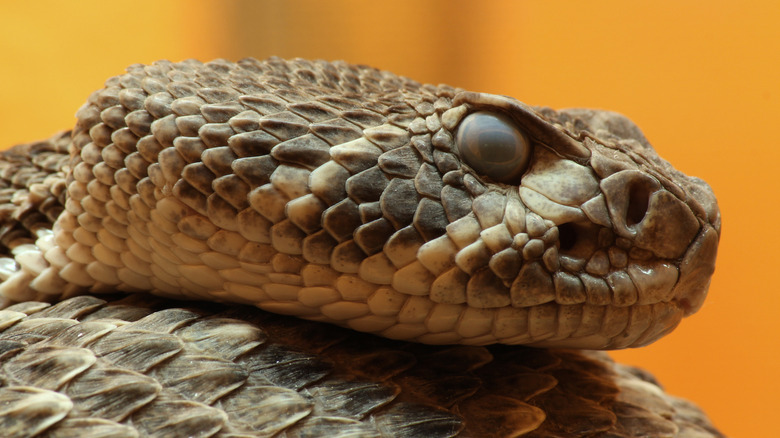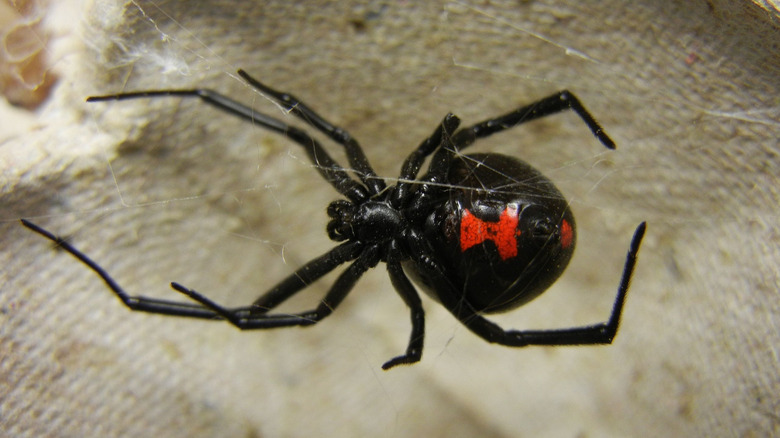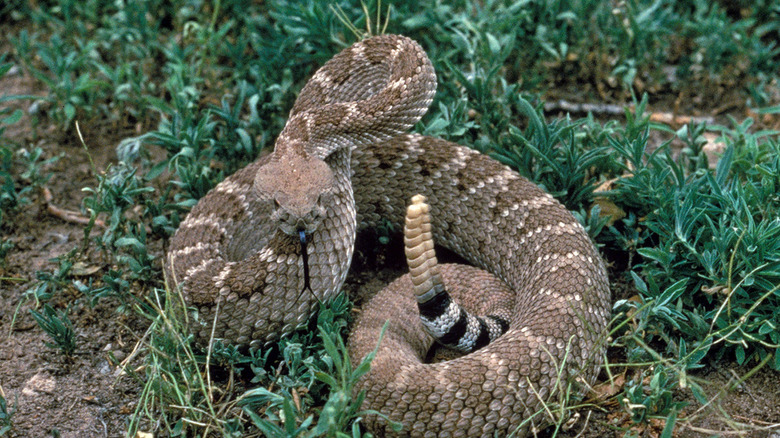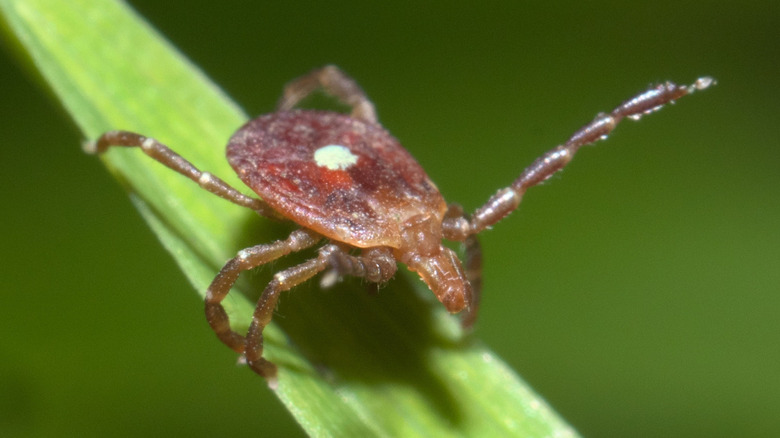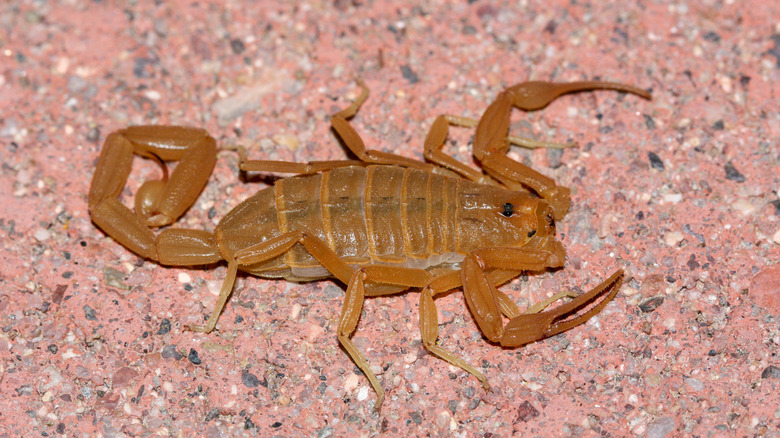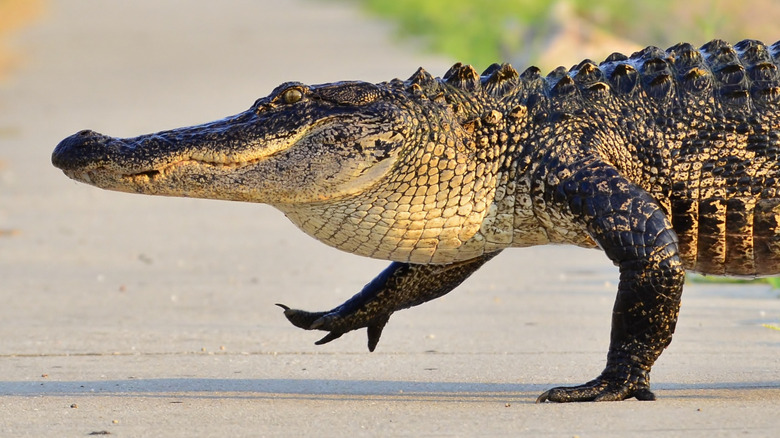Top 5 Most Dangerous Species In Texas
To explore the most dangerous species in Texas, we decided to narrow down the candidates to non-human creatures. That's because one of the deadliest of all is the homo sapien. There are also plenty of dangerous plants, fungi, viruses, and bacteria that present a wide range of hazards, hazards we excluded for brevity sake. For instance, dangerous desert plants can poke, prod, and poison explorers that get too close. However, animal dangers are viscerally frightening enough for an exciting overview, and the rough-and-tumble landscape of Texas has an abundance of prime examples for us to choose from.
Species in Texas can be dangerous for three main reasons. For one, there are creatures that possess a lethal venom or toxin, such as the Western Diamondback Rattlesnake. Second, some animals carry deadly diseases that can be discreetly transferred to a host through blood-sucking or internal parasitism. Thirdly, you might encounter critters in Texas that can simply rip you to pieces, like the American Alligator. That last one won't always kill you outright, but it's no small danger. As we'll see, avoiding such a predator requires respect and education when navigating the wild bayous along the Texan coast.
[Featured image by Holger Krisp via Wikimedia Commons | Cropped and scaled | CC BY 3.0]
The Southern Black Widow Spider
Most Americans have heard of the Black Widow spider, and its range across the continental U.S. has cemented its reputation as a killer. What most people don't realize is that the Black Widow's bite is rarely fatal. It's serious enough to land a top spot on the list of most dangerous spiders, but the misunderstandings surrounding this elusive arachnid are probably more common than the creature itself.
While the majority of us will never encounter a Black Widow in the wild, many folks have seen images of its large, bulbous abdomen and crimson-red hourglass markings. What most people don't know, however, is that the Black Widow won't attack without a reason. In Texas, the real risk of coming into contact with a Black Widow is when poking around vegetative areas, like gardens and shadowy wilderness. But even if you tend to the garden without gloves, a Black Widow bite probably won't kill you.
That being said, the Southern Black Widow's bite is medically significant. This species possesses a venom called alpha-latrotoxin, which can lead to serious side effects. It's reportedly 15 times more powerful than rattlesnake venom, though for all its potency, it's typically delivered in a small amount. Furthermore, many bites are "dry bites," where no venom enters the bloodstream. Typical side effects of Black Widow venom include nausea, muscle aches and pain, and a tight chest. For youngsters, seniors, pregnant women, and the infirm, a Black Widow bite will demand medical attention. Nonetheless, fatalities are exceedingly rare.
[Featured image by Shenrich91 via Wikimedia Commons | Cropped and scaled | CC BY 3.0]
The Western Diamondback Rattlesnake
One of the most dangerous animals in Texas is a serpent with a fast-acting venom that can prove deadly. The Diamond Rattlesnake's aggressive nature and quickness to bite make it dangerous. It's also the most commonly encountered in the state with a wide range. it's second only to the eastern Diamondback Rattlesnake in terms of snake-bite fatalities in North America.
The Western Diamondback Rattlesnake won't actively seek out conflict, but it's fast to defend itself when it feels threatened. When cornered, the snake will rattle its tail, giving you time to back off. That's why most rattlesnake bites are from surprise encounters, such as when someone accidentally steps on the creature before it can broadcast a warning.
Hundreds of Western Diamondback bites are reported every year in North America, and the vast majority of victims survive with treatment. However, they are serious. One bite from the Western Diamondback can inject up to 800 mg of venom, resulting in swelling, severe pain, and necrosis. The venom's fast-acting coagulating effects can also lead to renal damage. Fortunately, most victims survive with medical treatment, but those who don't have a 10-20% chance of death.
According to the FDA, 10-15 Americans die every year from snake bites, and rattlesnakes are known to be behind the majority of the venomous snake bites recorded in the United States.
[Featured image by Gary Stolz via Wikimedia Commons | Cropped and scaled | CC BY 4.0]
The Lone Star Tick
You may be thinking, "A tiny little tick? What's the big deal?" But the "Lone Star Tick" is actually one of the most dangerous animals in Texas. Its deadly power comes from two main characteristics: an insidious, easily-overlooked mode of attack and an infectious, disease-carrying disposition. In other words, it can harm and even kill via the many disease vectors that it carries.
Even if you haven't experienced it yourself, you're probably familiar with someone who has had Lyme Disease. It's incredibly common in the U.S., and the vast majority of cases are a direct result of a tick bite. Here's the thing about Lone Star Ticks, however — they're not typically transmitters of Lyme Disease. But while other tick species are potential Lyme Disease deliverers, the Lone Star Tick often carries other serious diseases.
The most prominent Lone Star Tick disease is STARI (southern tick-associated rash illness), which may cause symptoms that mimic Lyme Disease and lead to false diagnoses. If bitten by this white-dotted (hence, "lone star") tick, you can develop a rash, a bullseye pattern on the site of the bite, a fever, a headache, and muscle pains. For Texans that spend time in their yards and gardens, the Lone Star Tick is a threat. Should symptoms arise after discovering a tick bite, seek medical attention.
STARI is just one example, you could also contract Tularemia with symptoms like fever, skin ulcers, and enlarged lymph nodes. Luckily, the CDC has a useful guide to tick borne illnesses.
[Featured image by Robert Webster via Wikimedia Commons | Cropped and scaled | CC BY 4.0]
The Arizona bark scorpion
Ironically, one of the most dangerous animal species in Texas is named after a different state — the Arizona Bark Scorpion — though it's elusive and not commonly encountered. Nonetheless, this is the most venomous scorpion in all of North America, so Texans should beware.
Deaths from scorpion stings are rare, and only around 3,250 per year. Majority of those deaths are from tragic circumstances, such as allergic reactions and vulnerable sting locations like the face. Because scorpion venom leads to inflammation, a sting to the face can cause asphyxiation.
The Arizona Bark Scorpion doesn't have an official database for fatalities, but it's the most venomous scorpion in North America. In Texas, scores of people are stung by the Arizona Bark Scorpion every year. But like most critters, it doesn't actively look for trouble. Instead, most encounters occur when the arachnid seeks out a refuge during the colder months, thus ending up in boots, sleeping bags, or other insulated areas that can provide shelter.
So if you check your boots before putting them on your feet, you should avoid becoming a statistic. The scary part about the Arizona Bark Scorpion is its record as the most venomous scorpion species in the United States. That's saying a lot for a country with such a diverse scorpion population, but knowledge is your best defense. As long as you're aware of this arachnids' propensity for seeking warm hiding spots like shoes, you can check for its presence and avoid its dangerous sting.
[Featured image by Andrew Meeds via Wikimedia Commons | Cropped and scaled | CC BY 4.0]
The American Alligator
While the American Alligator is most often associated with "crazy" Florida headlines, such as this tragic case of a Florida man who lost his arm while taking a moonlit swim, the reptile is also well-established in eastern Texas. In fact, the American Alligator thrives all along the coast of the Gulf of Mexico. Florida may have the crocodilian spotlight, but it's dangerous in Texas, as well.
The American Alligator can be dangerous to encounter, yet harmless when given a respectful distance. To highlight this point, consider when a Texan was killed by an alligator in 2015. Tommie Woodward took off his shirt and prepared to jump into a swimming hole when a bystander warned him of the alligators in the water. He reportedly said, "[expletive] the alligators!" and then dove into the water. Woodward was attacked and killed as onlookers watched in horror.
With some common sense and caution, however, the risk of getting killed by an American Alligator is extremely low. Of course, caution doesn't make the reptile any less dangerous, as they will (and do) eat humans in certain situations. But since the best defense is education, the best way to live peacefully alongside these ancient predators is to explore the information provided by the Texas Parks and Wildlife Department, which explains what to do in the case of an encounter and provides various other resources for staying safe around these living fossils.
[Featured image by Gareth Rasberry via Wikimedia Commons | Cropped and scaled | CC BY 4.0]
